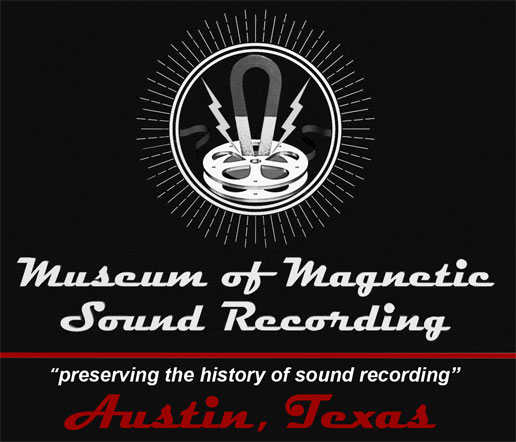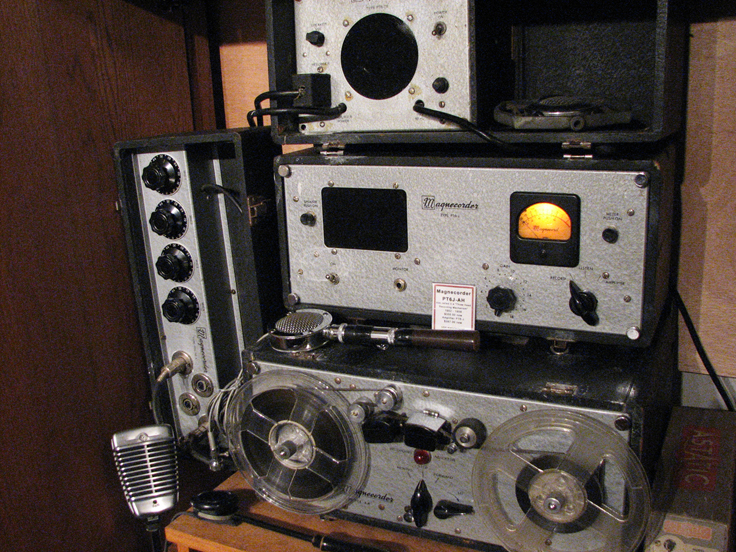Interviews and Stories
Preserving the stories of significant individuals in sound recording generally and magnetic recording specifically is a major project of MOMSR. The Museum’s goal is to document the stories of those persons who contributed significant inventions, manufactured equipment and who engineered and produced audio recordings, especially in the areas of music, broadcast, film/video and science. These interviews will be available on MOMSR’s web site and in the permanent facility when it is created. These interviews have also been made available to the Audio Engineering Society (AES) and the National Academy of Recording Arts and Sciences (Grammy’s).
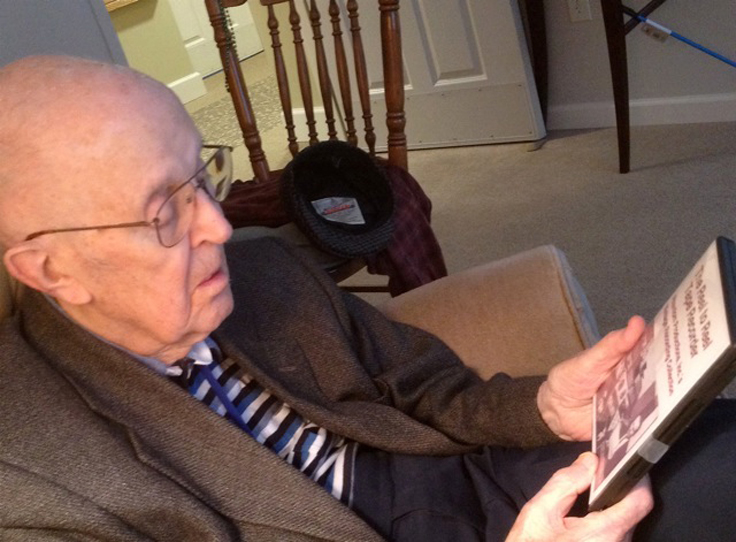
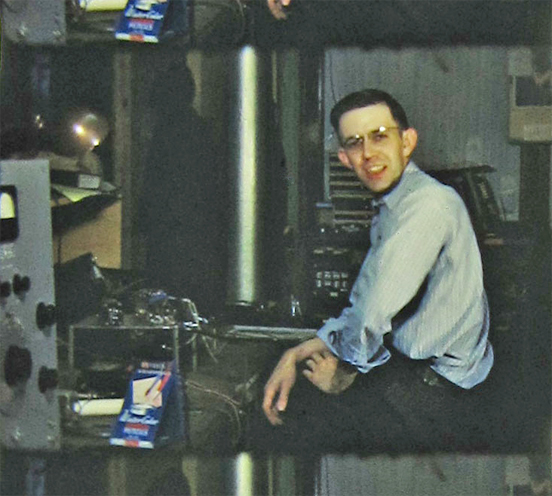
John Boyers - Founder Magnecord - 1916 -2012
On September 29, 2012 I was saddened to receive word from Dave Boyers, that his Dad had passed away. Here is the message he sent out.
"Gentlemen,
The last remaining founder of Magnecord, Inc. has now passed into history. Dad has wanted to go be with my mother for some time now, suffering the ravages of Alzheimer's for several years. His wishes were finally granted.
To the degree he could understand it, it has been no small measure of pride that so many people have come to know and appreciate the work he did half a century ago to further the art and science of audio recording.
Similarly, the work all of you do to keep the memory of those early pioneers alive is not only worthwhile, but also gives others like Dad a sense that the efforts they made are not forgotten.
Best wishes to you all,
db"
 Magnecord
Magnecord
Magnecord, Inc. was founded in Chicago, IL in 1946 by 5 men who worked for the Research Division of Illinois Institute of Technology.
Through Chris at Preservation Sound, we were able to connect with Dave Boyers the son of John Boyers (left in the 1940's) who is the only remaining founder of Magnecord. John Boyers is 96 (2012). Dave provided us with numerous items about his Dad's company and we are sharing much of that information here as well as in our 7 hour 3 DVD set about sound recording and our vintage reel tape recorder recording collection.
 Here is a wonderful summary about Magnecord written by John Boyers (seen to the left in 2012 looking at Phantoms DVD set) - view pdf
Here is a wonderful summary about Magnecord written by John Boyers (seen to the left in 2012 looking at Phantoms DVD set) - view pdf
Magnecord's first product was the professional  wire recorder SD-1(SD ="Super Duper") . However the company quickly moved to produce reel tape recorders beginning with the PT series seen in the 1949 ad above. View movie of Magnecord employees working on the SD-1 in 1947.
wire recorder SD-1(SD ="Super Duper") . However the company quickly moved to produce reel tape recorders beginning with the PT series seen in the 1949 ad above. View movie of Magnecord employees working on the SD-1 in 1947.
In 1949 they had 90 employees and were doing $90,000 a month in business.
In 1956, Midwestern Instruments (later known as TELEX), a six-year-old Tulsa,
Oklahoma, company that made geophysical instrumentation, acquired Magnecord
Last reel tape recorder manufactured in the late 1960's
Telex acquired by Memorex in 1988 and went out of business in the mid-1990's
View copies of the Magnecord Newsletters - Click on the photos to view the full issue in pdf
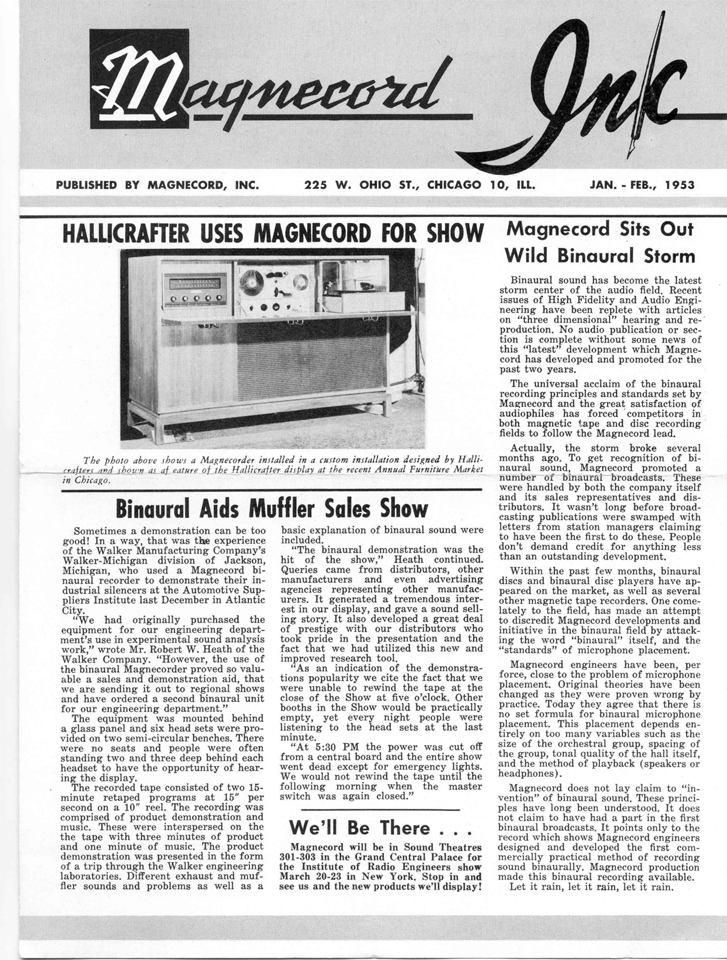
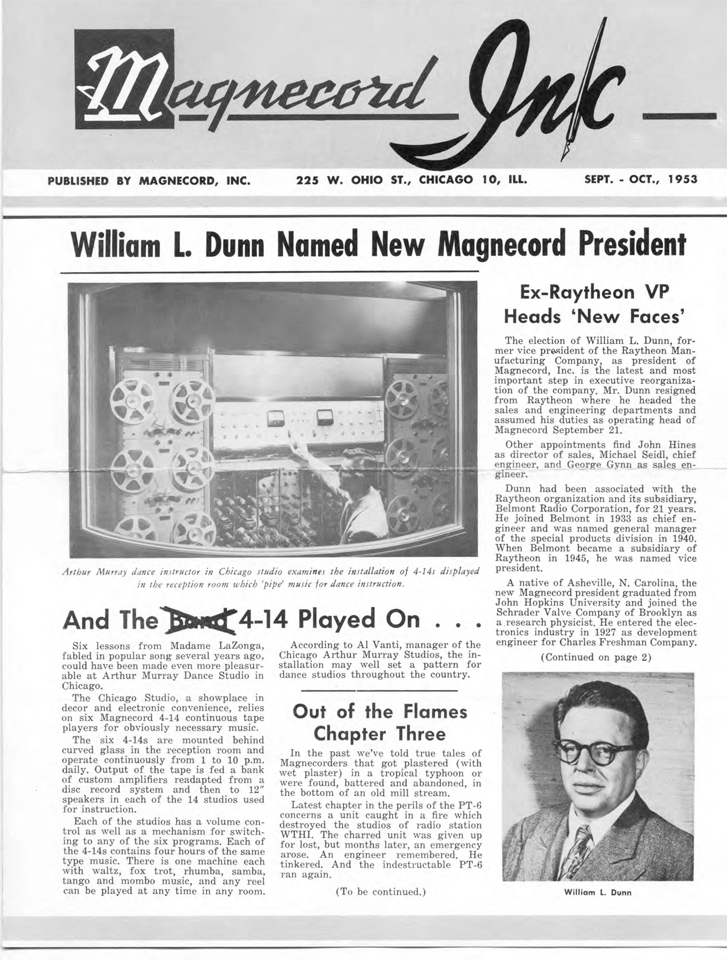
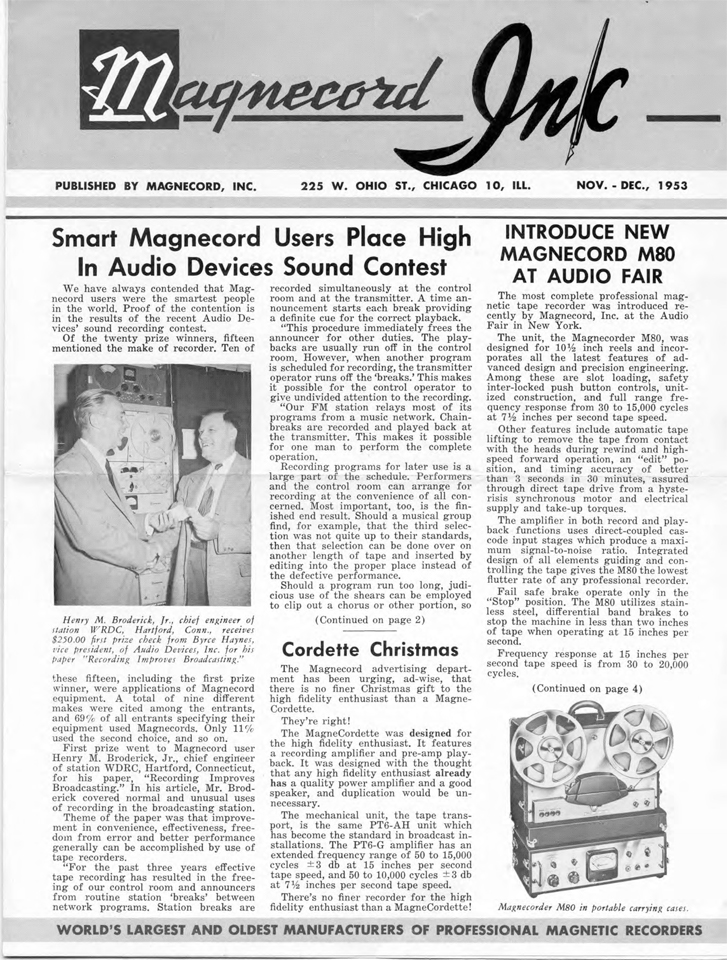
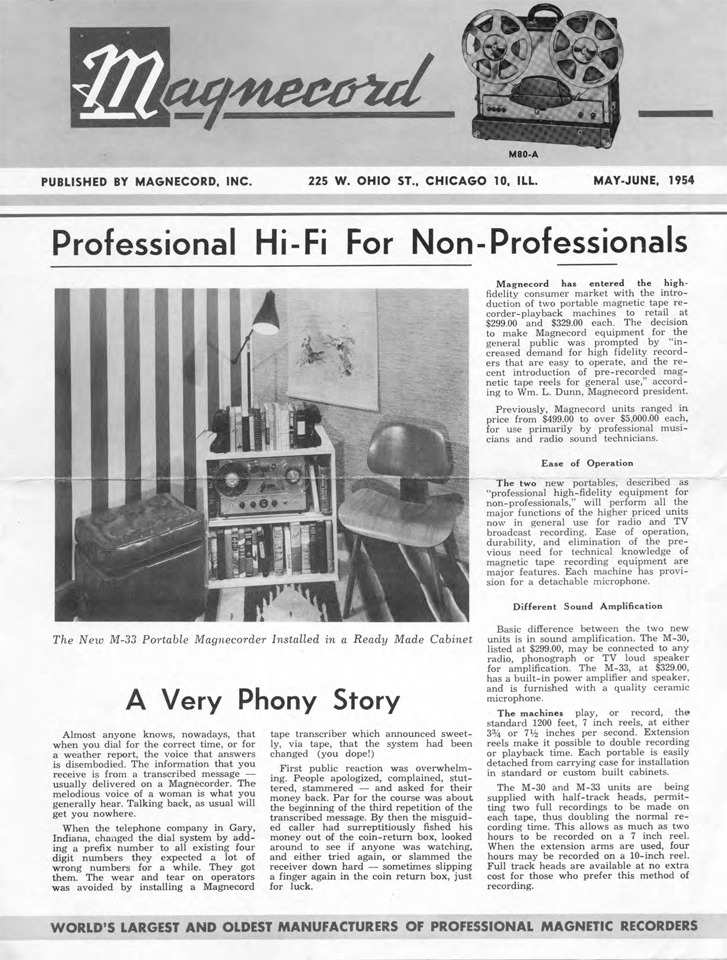
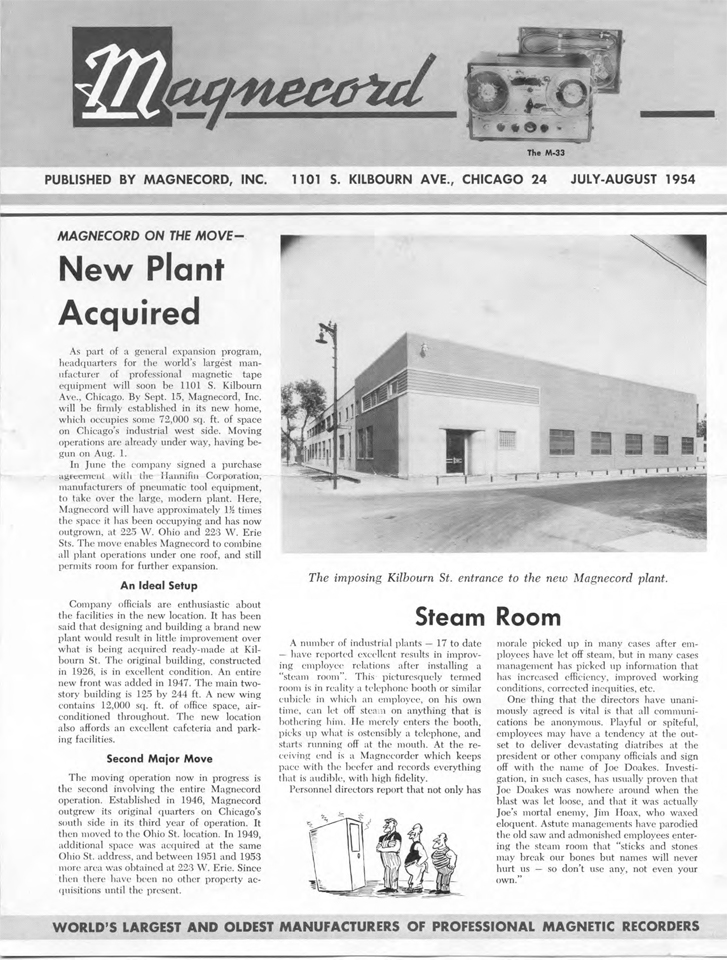
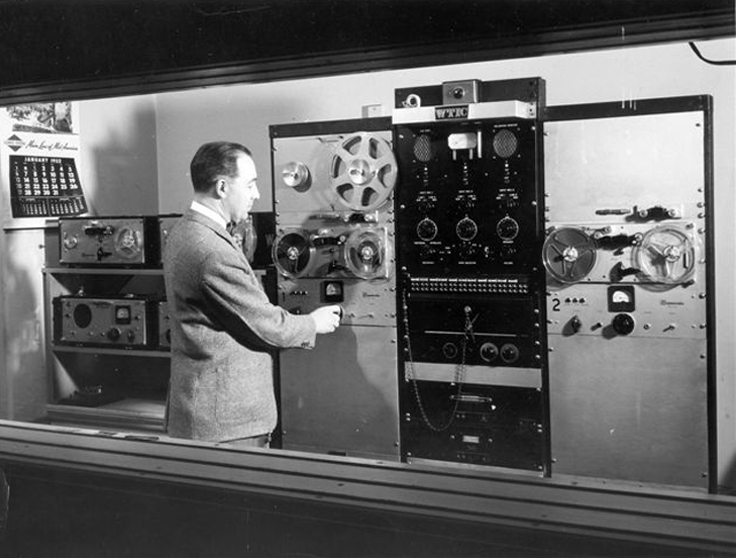
The following information (initially provided to Preservation Sound) came to us from Dave Boyers (2012)
“I wouldn’t be too surprised to learn there are some (PT-6s) still in use, probably in some third-world broadcasting station somewhere. My first PT-6 was an engineering sample put together prior to the start of manufacturing. I still have it, and it still works, (although I make that claim having not tried to fire it up for 30 years!)
Dad is still with us, although he is the last survivor of the original group, at age 95… One of Dad’s favorite stories… is the time he couldn’t make payroll, but the man at the bank gave him the funds he needed because of the trusting relationship he had built with the bank.
Dad’s interest was mostly engineering. He designed the heads, experimenting with various metals and ways to make the recording gap smaller and smaller. Back then, the heads were built one at a time, by hand. One of the handiest features of the “6″ was the ability to do instant playback head alignment with that little 4/40 screw and spring tensioner. …I don’t remember if that was a feature of the production machines or if it was just something they built into the sample I have.
Oh, here’s another story you might enjoy knowing about: Dad and one of the other guys in the shop had a brainstorm and decided to build a “binaural” (ed: Stereo) transport just for fun. They got it working and took it down to the Illinois Central train station and made a recording of a steam locomotive going by. I remember hearing the recording, with the locomotive coming in one channel and going out the other. The binaural recorder was the hit of the audio trade show in Chicago that year. According to Dad, the crowds around the little Magnecord booth were huge and the buzz of the show was all about the unbelievable train recording. I asked Dad why they didn’t get a patent on it and he says that it wasn’t patentable. It had been done before, although not commercially, and it didn’t meet the “new and novel” requirement of patent law. I’ve often wondered if they weren’t just working with the wrong patent attorney.”
The speaker “order” was round to rectangular. I happen to posses what is very likely the earliest known PT6, the engineering sample which Dad brought home for me to play with when I was about 10 years old. I have amp from the same exact time period, (also an engineering sample), and it has a round speaker cutout. At some time very shortly into the production of the pair, they went to a rectangular speaker cutout- Perhaps it can be dated by looking at photos in “Magnecord Ink”, the company newsletter.
I do have many original company service manuals, but they deal almost entirely with schematics, not mechanics. I’ll have a good look through them and see if there’s any “exploded” views for you.
Photos from the Magnecord factory provided by Dave Boyers (son of founder John Boyers) with referral from Chris at Preservation Sound.
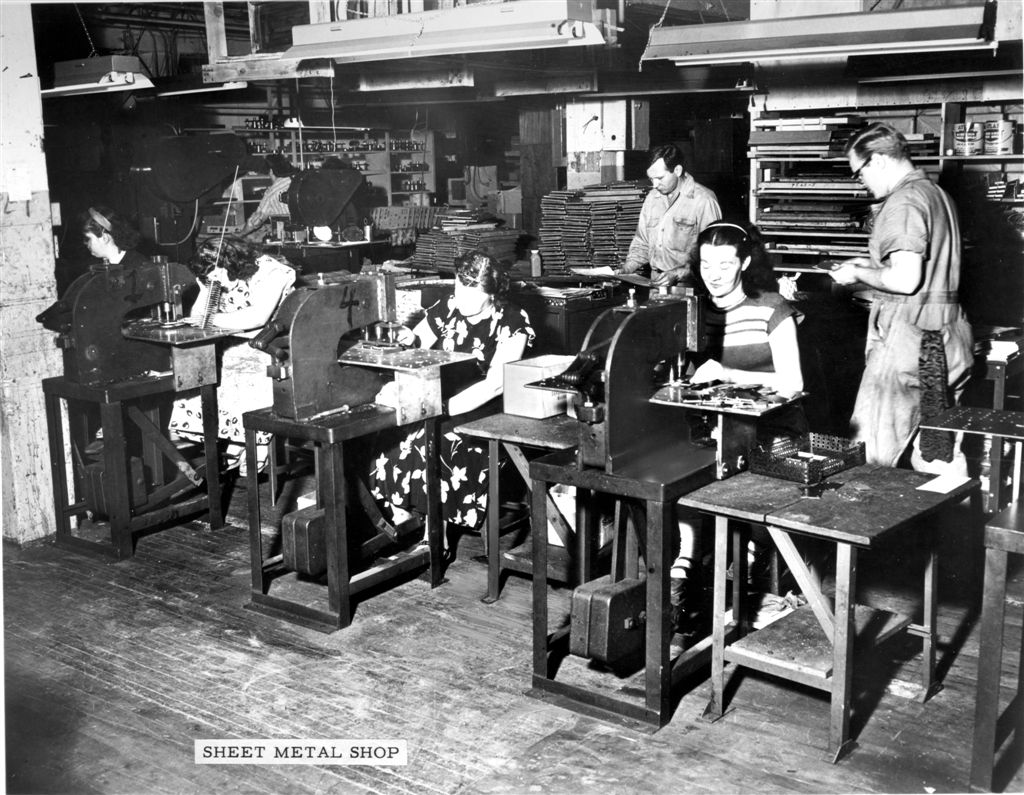
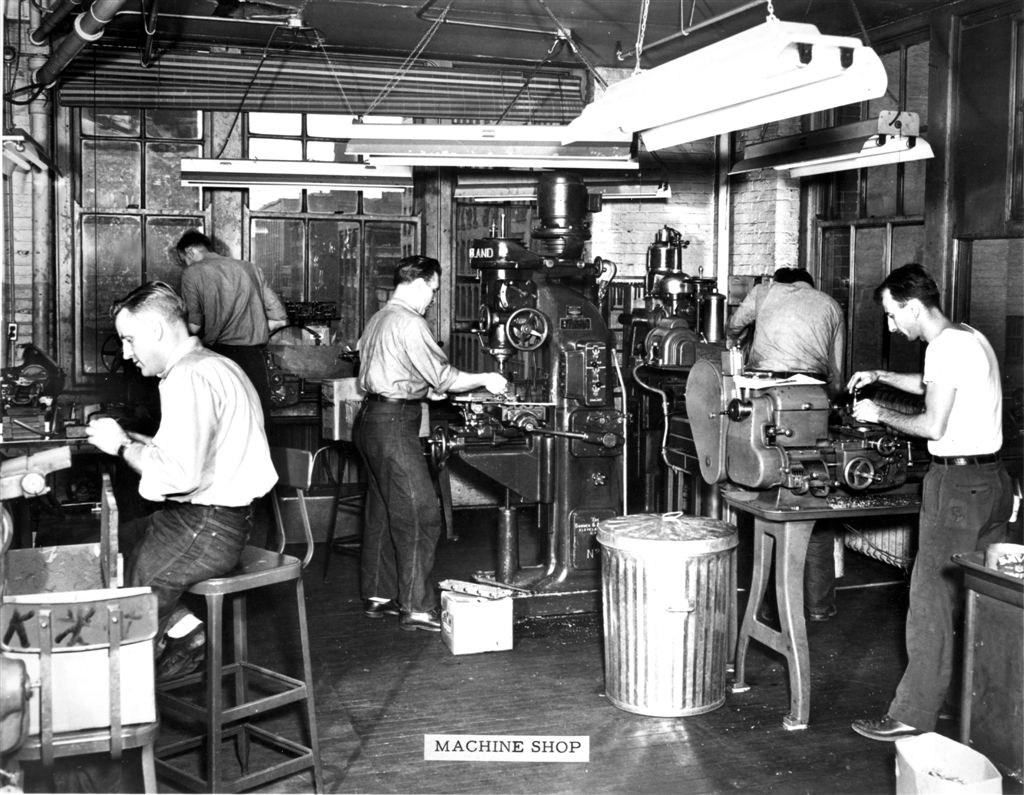
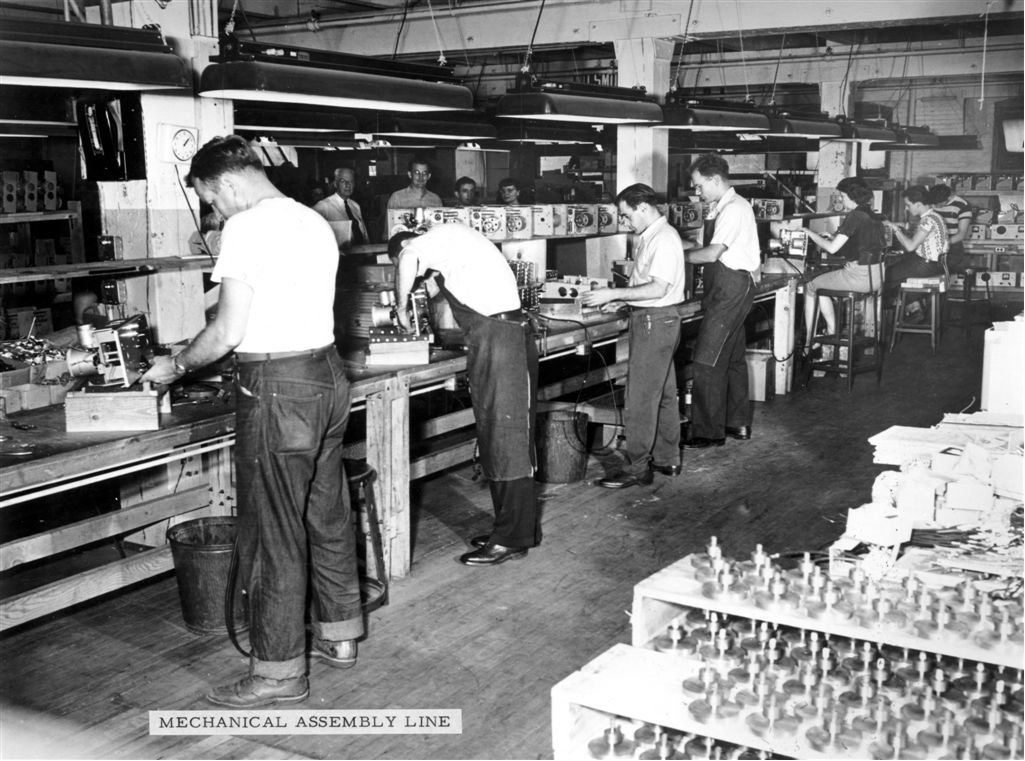
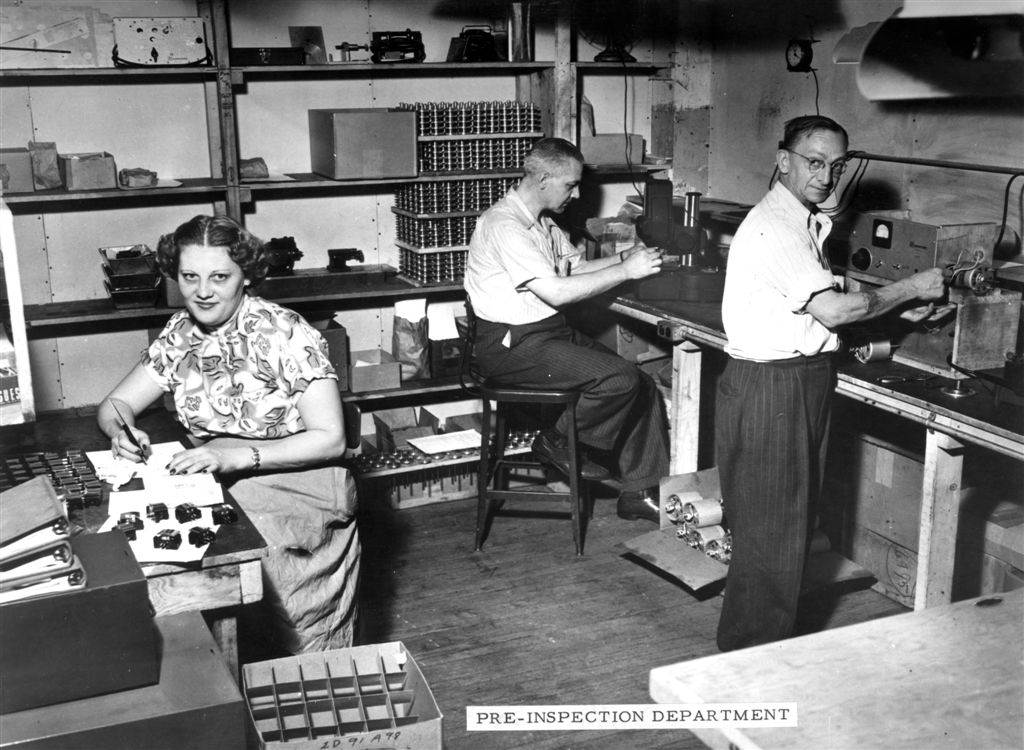
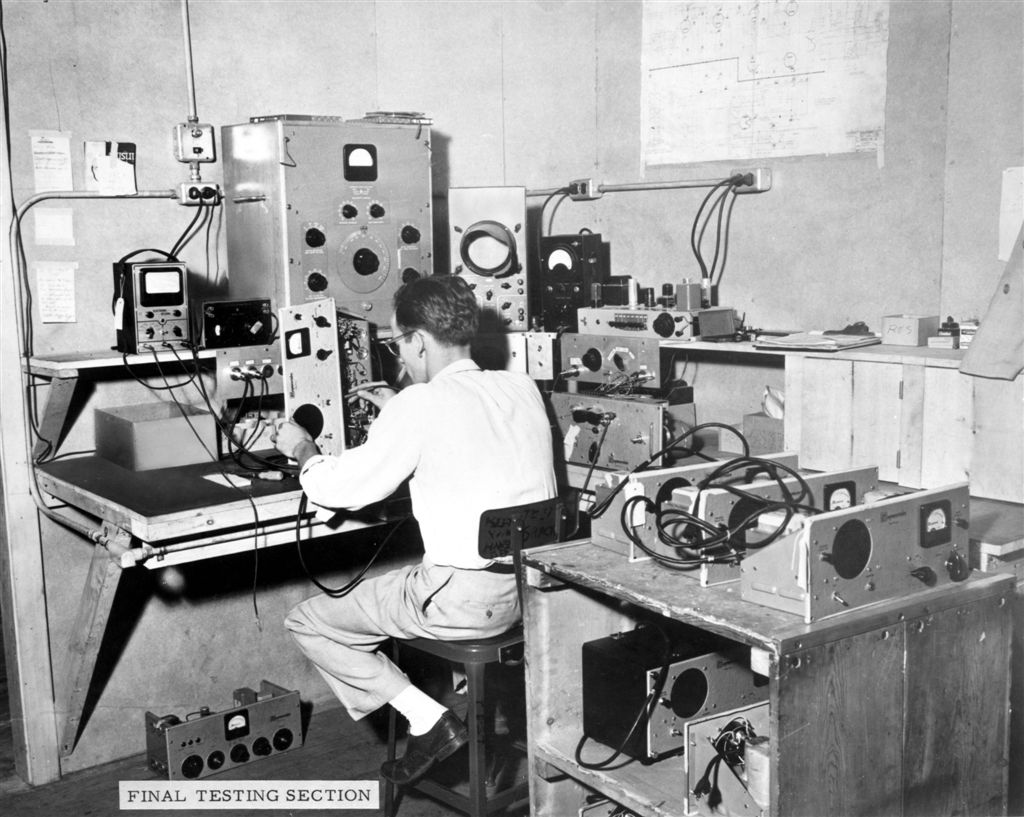
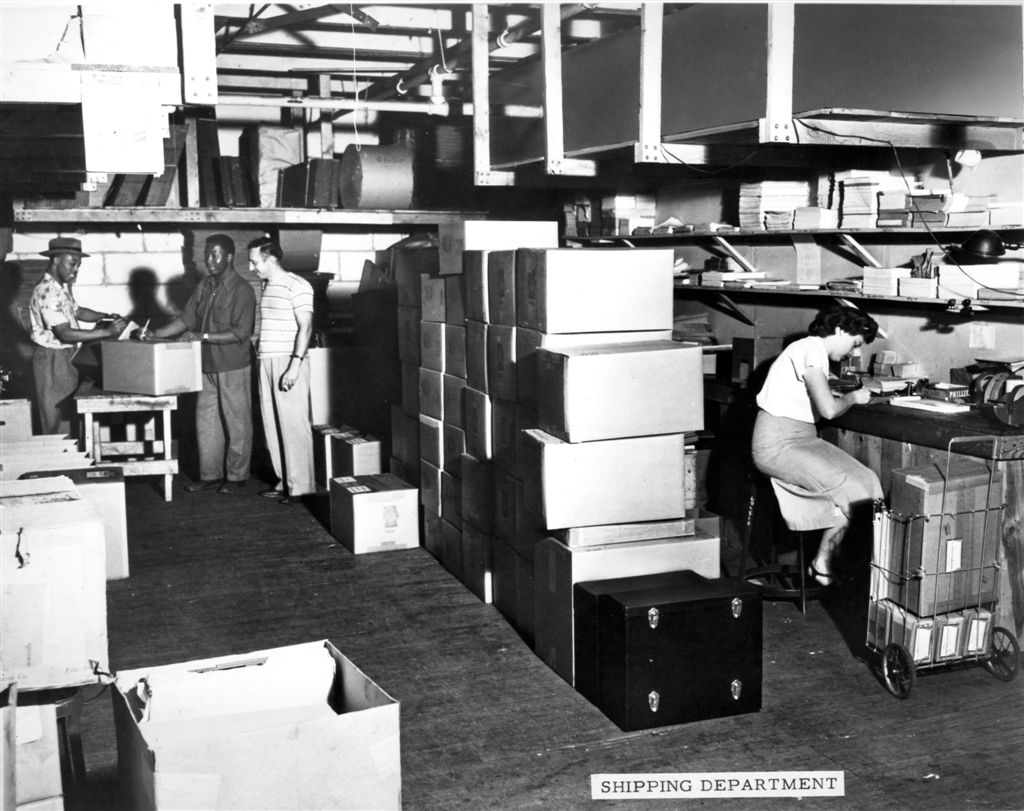
Update: These original Magnecord PT6 reel tape recorder and its companion amplifier were donated by Dave Boyers to the Museum of Magnetic Sound Recording on June 9, 2017.
Here are some photos of perhaps one of the very first 5 Maggies ever made. This is my personal PT6, which was one of the early engineering samples (proof of concept) for the entire model run.


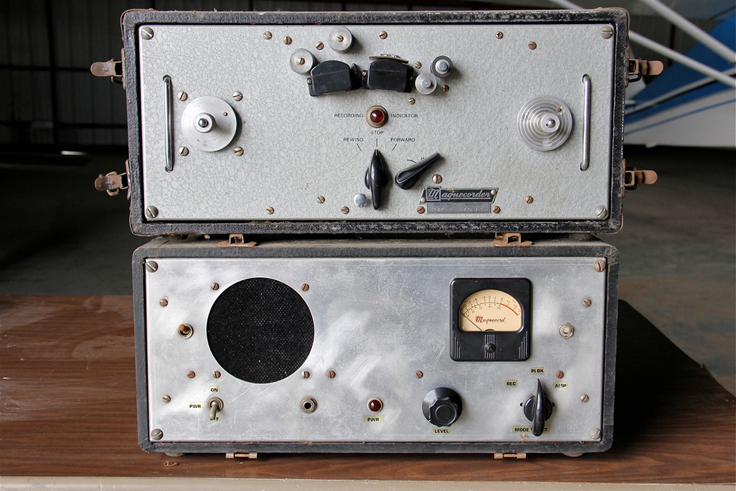
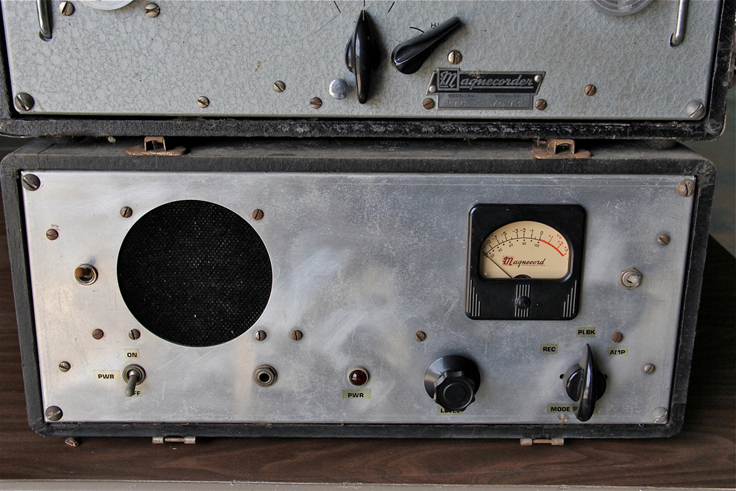
Before doing that, I'll give you a little history. Dad brought the unit home (without a case) for me to play with. The faceplate was bare aluminum, no paint, and it still had layout die on it. My guess was he salvaged it from a trash can, but I can't verify that. He also brought an amp section, and it had a case. It also was an engineering sample.
Without the long story behind it, I'll confess that I dropped the transport. It bent things up badly enough that they had to put a modern faceplate on it, so the original one is long gone.
That happened in the early 50's. When I was in college, a friend who owned a recording studio sold me a case for the transport which he had in a junk closet. Dad identified it as one they had sold to a government agency, he thought perhaps the FBI.
The cases were made by a cabinet shop not far from the factory in Chicago.
When I started my production company, the PT6, which had a full track head on it, was the machine I used to record announce tracks from the booth. It served me well until I could afford a more modern machine.
You'll note that the amp is unpainted, as was the transport when I first got my young hands on it. The faceplate was probably salvaged from a machine that was junked, as it has a data plate with a long serial number.
I don't know the serial numbering scheme, so I have no idea what the number actually means. I only know it was on the replacement face when Dad got it repaired after my rather untimely accident.
When I first got the PT6, it didn't have the fast forward lever- that was installed with the new front. I had discovered, however, that placing the main control between stop and forward caused the take-up reel to go into fast forward as the capstan/pressure roller separated. In today's computer speak, I guess they'd call that an "undocumented feature".
Head and capstan/pressure roller, 15 IPS. I also have the 7.5 pair.
The amplifier was very original, no silk screening or paint. The original meter and speaker switches were push button style, as I recall.
Anyway, there's a little trip down memory lane. Interesting to note that after all those years of storage, the cases still smelled the same inside.
Dave Boyers 2012
Here is a Christmas card sent out by Magnecord (photos provided by Dave Boyers)
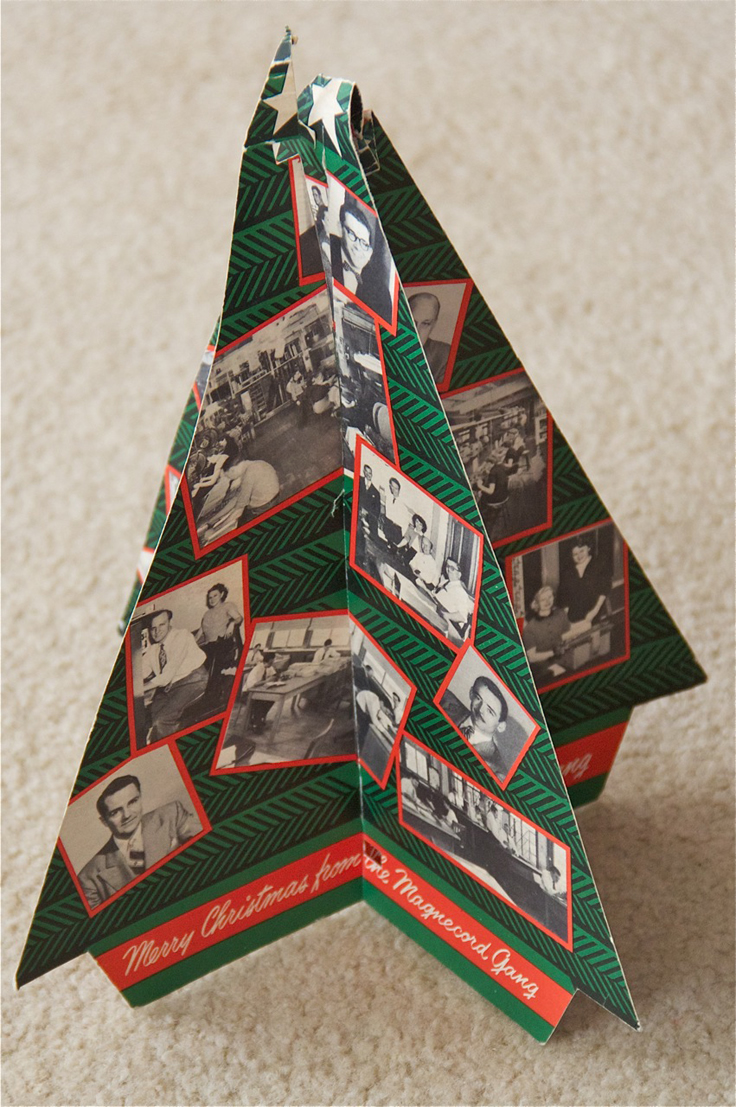
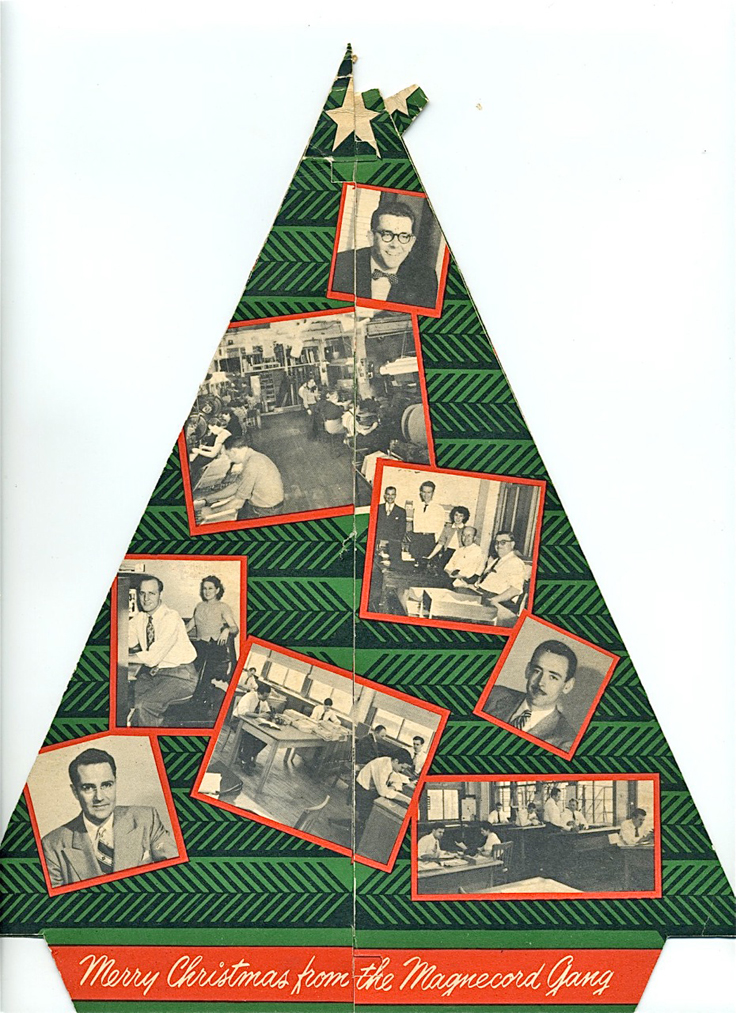

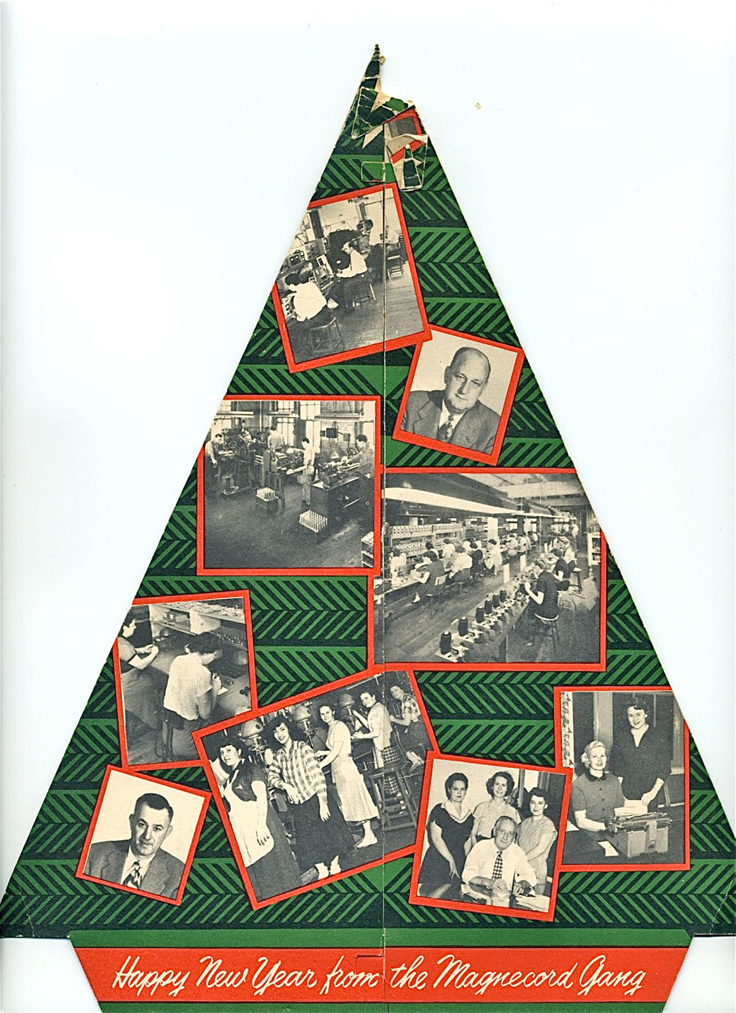
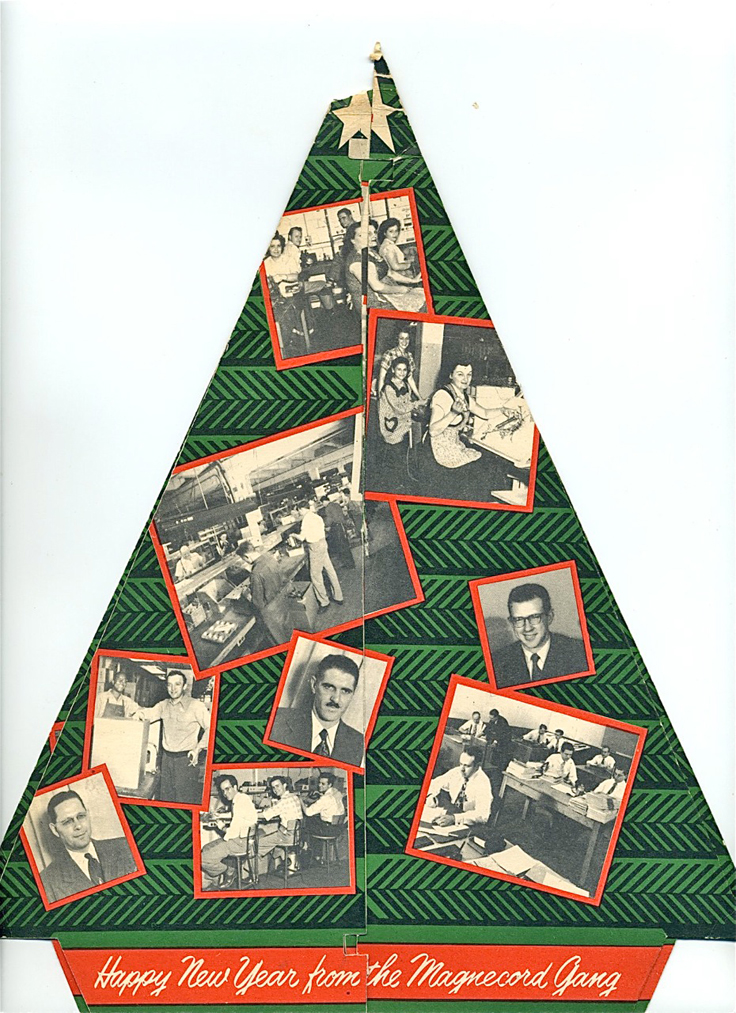
Magnecords at Radio Free Europe
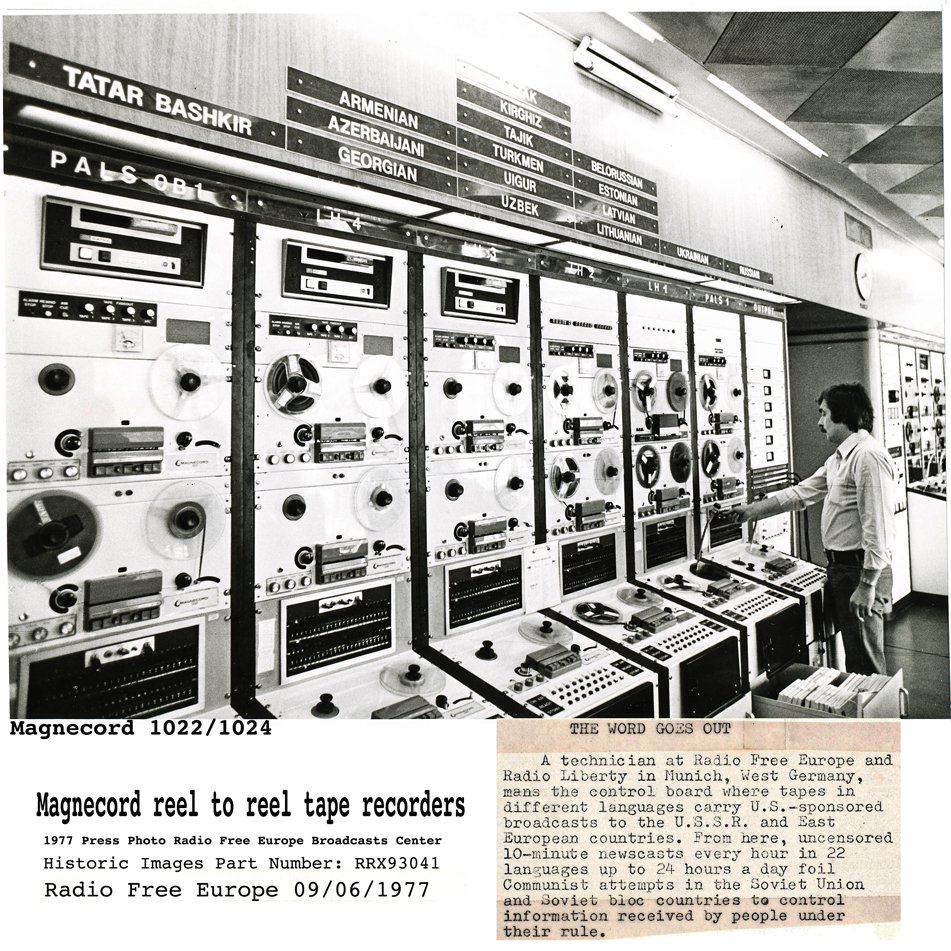

Magnecord PT-6 used in broadcast of the Far East Network
Magnecord Memories
Lawrence Grover built one of the first solid state reel to ree ltape recorder amplifiers and then went on to design the electronics for the Magnecord 1020 HeathKit AD-16 reel tape recorder.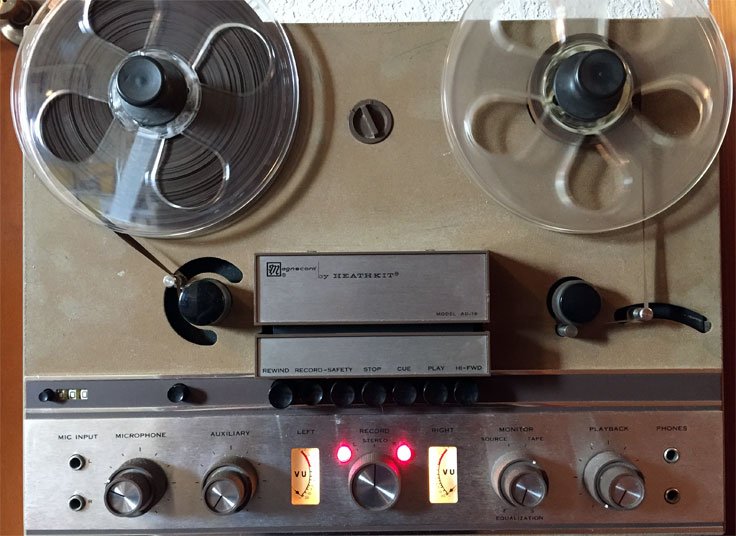
"At my first job out of college, I worked for TI in the Germanium Applications branch. While there we got a request for a microphone amplifier from Midwestern Instruments. I was assigned to design the amplifier. As a demonstration project, I designed a fully transistorized record and playback set of electronics to be shown at the 1959 or 1960 Consumer Electronics Show in New Youk City. I made a deal with my boss, I’d buy the deck (Viking) if I could have the complete unit afterwards. I believe this was the 1st public circuit of a fully transistorized record playback unit. Other transistorized circuits did not have a transistorized oscillator. About 1 year later, I found out that Midwestern Instruments was looking for a design engineer for the Magnecord division.
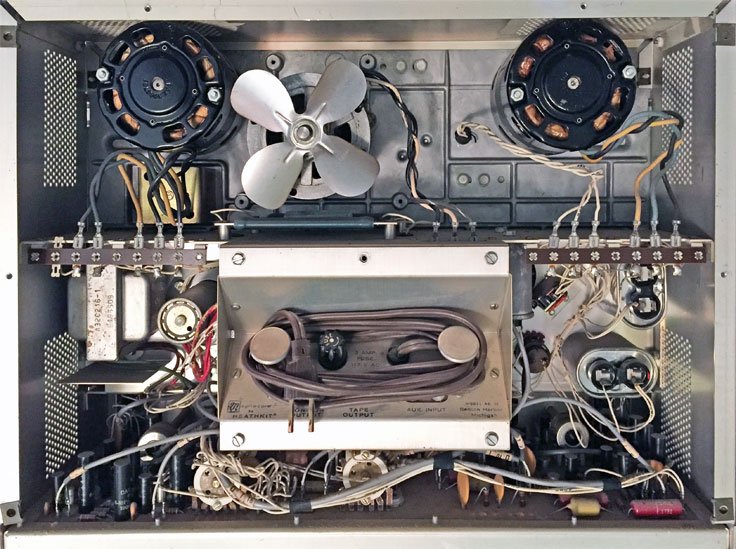 Paul Bunker was in charge of sales for Magnecord. He was aware of the emergence of transistorized audio equipment and had decided it was time to develop a solid state tape recorder. The first question was to use germanium or silicon transistors. Silicon was available but was significantly more expensive aimed at military and high end use (computers). Since there was no performance advantage of silicon over germanium (assuming temperature stable biasing design), we went with germanium. In hindsight, we could have gone with silicon as the price of silicon devices started dropping with increased usage. I later designed the electronics for the ANUNQ7 tape recorder designed for submarine use, using silicon.
Paul Bunker was in charge of sales for Magnecord. He was aware of the emergence of transistorized audio equipment and had decided it was time to develop a solid state tape recorder. The first question was to use germanium or silicon transistors. Silicon was available but was significantly more expensive aimed at military and high end use (computers). Since there was no performance advantage of silicon over germanium (assuming temperature stable biasing design), we went with germanium. In hindsight, we could have gone with silicon as the price of silicon devices started dropping with increased usage. I later designed the electronics for the ANUNQ7 tape recorder designed for submarine use, using silicon.
While the mechanical engineer went to work on the tape transport mechanism, I started design on the electronics. At this time, I had only had 2 years of design experience, but I went confidently ahead. At that time we were comparing transistor amplifier distortion to vacuum tube distortion specifications. Our amplifier designs were judged to be good if the distortion levels were at least as good as the vacuum tube amplifiers. Later it became more widely known that the nonlinearity of vacuum tubes tended to cause even harmonics, which are not very objectionable to our ears, since most instruments tend to produce notes with even harmonics. Transistors have a differently shape transfer curve and tend to produce odd harmonics which we find objectionable in music. Also vacuum tube amplifiers have a soft limiting when over driven versus a harder limiting for transistors, again producing less objectionable harmonics. If I had been aware of these facts at that time, I would have been more diligent in pursuing lower distortion designs. The final specifications of the design while comparable to vacuum tube designs of that day, didn't’ reflect the more subtle character of the harmonics of the distortion. The fact that magnetic tape is nonlinear gave us additional justification to not to pursue lower distortion amplifiers.
When the breadboards of the circuits were completed and tested, we made circuit board layouts. There weren’t any software programs to aid is this task at that time, so it was all done by hand. I made paper cutouts of the outlines of the components at 4 times scale. On a large piece of Mylar I used black layout tape and pads to lay the circuit out. An xacto knife came in handy to trim the curves and fillets. Of course this was all one sided to keep the cost low.
As I became more aware of the limitations of analog magnetic tape recording, I did some limited experiments on my own. With some success I was able to pre-distort the recording signal to null out some of the tape distortion. I also experimented with placing a magnetic material on the back side of the tape at the recording head in an effort to reduce the fringing flux. This resulted in a slight improvement in the recording of higher frequency signals. About this time we bid on and were awarded a contract to build the ANUNQ7 tape recorder for the navy, so I had no time to pursue either of these further.
The first Magnecord models I designed were the 1020 series, followed by the 2000 series. Later I was employed by the Heath Company. There we made a kit version of the 1020 series. The Heathkit version was the AD-16.
Lawrence Grover
4/26/2017
Magnecord 1020 / HeathKit AD-16 reel to reel tape recorders were donated by Lawrence Grover to the Museum of Magnetic Sound Recording
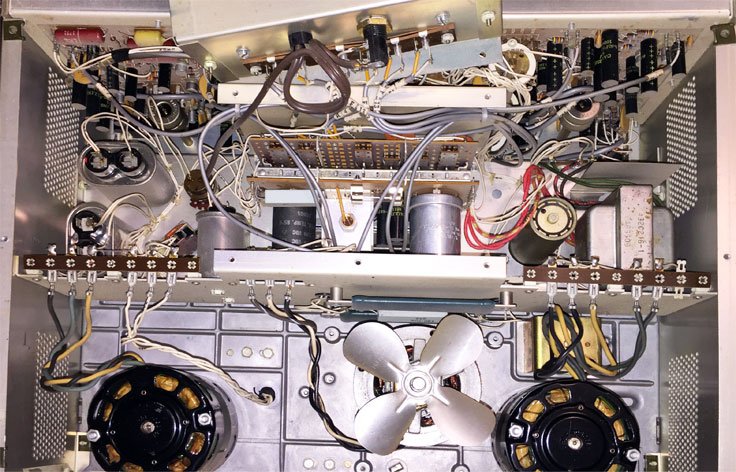
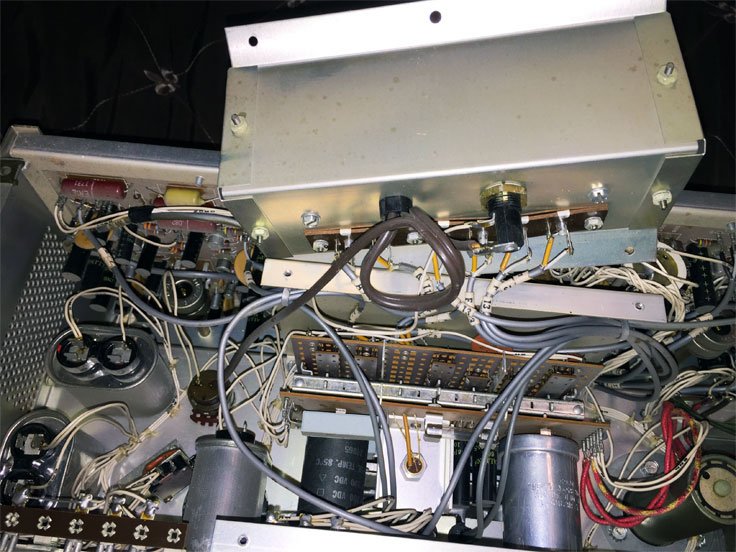
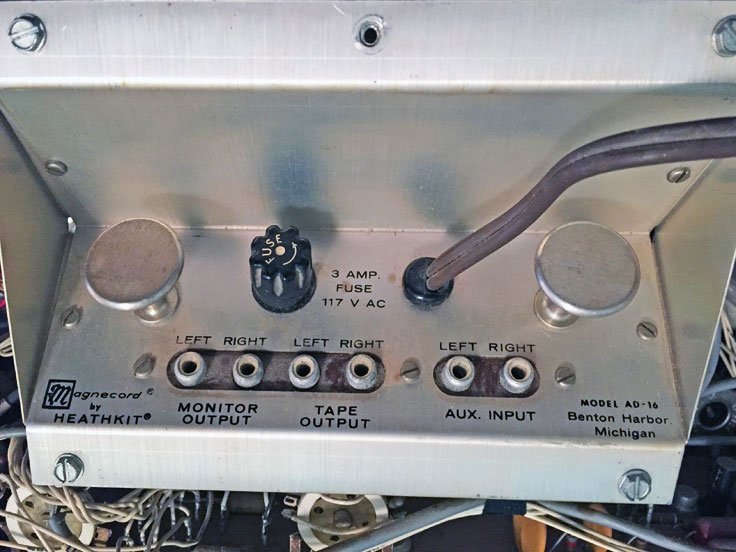

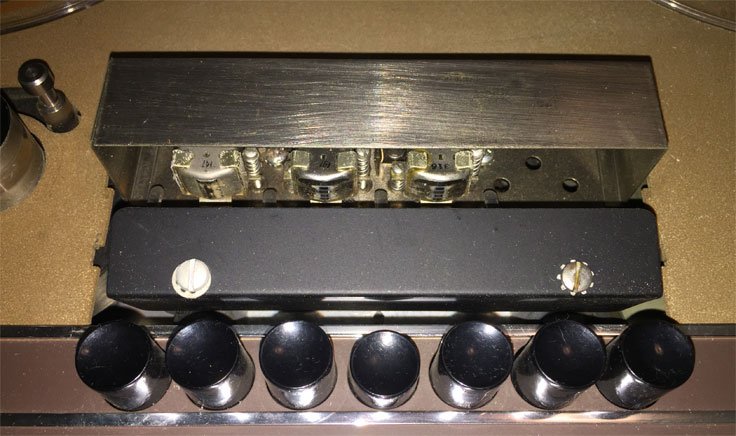

Back to Stories Main Page
